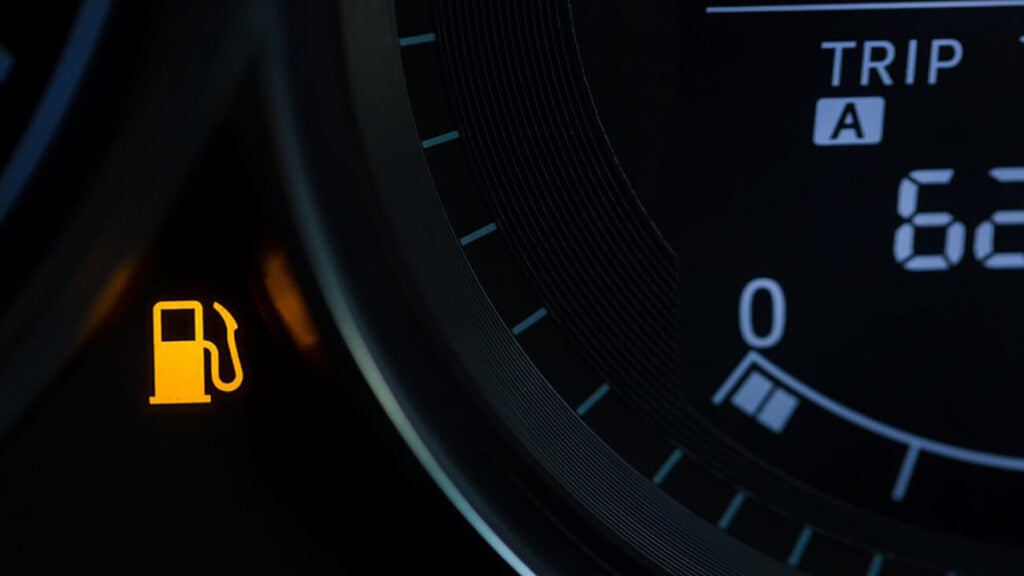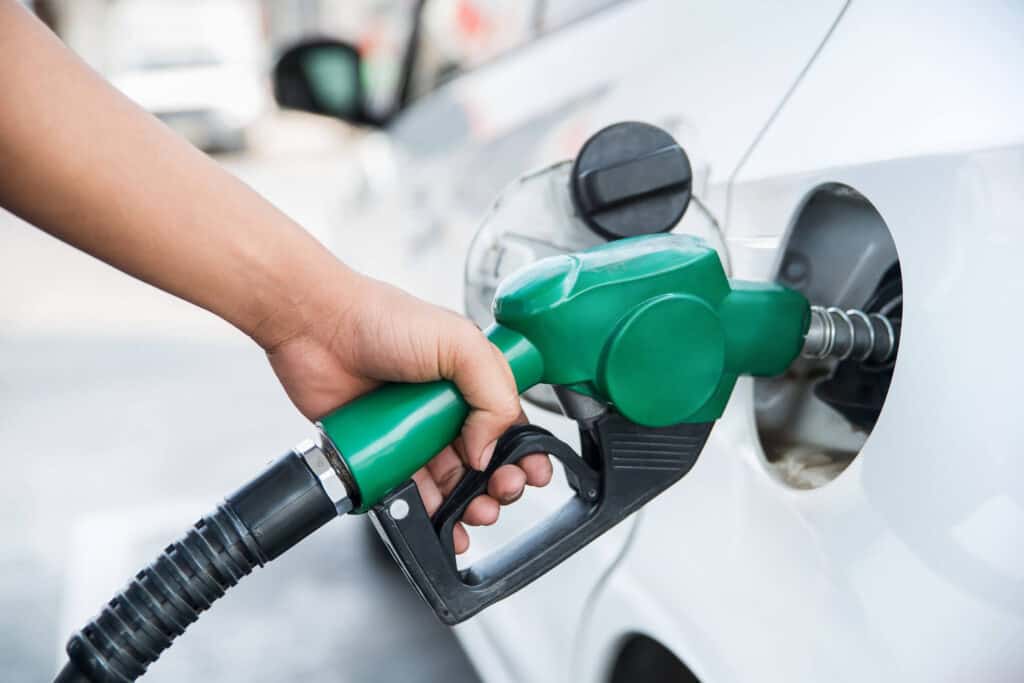The Importance of the Low-Fuel Warning in Modern Vehicles
Today’s vehicles come equipped with an array of sensors and warning lights, and among the most vital is the low-fuel warning light. Its primary function is simple yet crucial: to inform drivers that the fuel tank is running low. This warning aims to prevent the undesirable situation of running out of gas, which could lead to both inconvenience and potential safety concerns on the road.

The Language of Colors: Decoding the Different Fuel Warning Lights
• The Psychology of Colors: Vehicle manufacturers carefully select colors for warning lights based on their psychological impact. Colors evoke immediate emotional reactions, making them effective for alert systems.
• Yellow – The Gentle Reminder:
– Serves as an initial warning, highlighting that the fuel levels are depleting.
– Acts as a cautionary signal, nudging you to plan a refueling stop in the near future.
– Though not immediate, it’s a precursor to the more urgent orange light.
• Orange – Time to Act:
– Denotes that the fuel level has significantly decreased and is nearing empty.
– An orange light typically means there’s only a limited distance left before the tank runs dry.
– It’s a stronger alert, urging the driver to refuel at the earliest opportunity.
• Interpreting the Blink: Occasionally, these lights might blink instead of remaining steady. A flashing light often amplifies the sense of urgency or indicates an irregularity needing attention.
• Fuel Icons: Alongside the color system, the symbol (often a gas pump icon) assists in quickly identifying the nature of the warning. Some vehicles might also incorporate an arrow, pointing to the side of the car where the fuel cap is located, aiding in quicker refueling stops.
• Digital Displays: Modern vehicles equipped with advanced infotainment systems might supplement the warning light with a message or even provide an estimated range left based on the current fuel levels, offering drivers a clearer picture of their situation.
Gauge Accuracy: How Reliable Is That Fuel Warning Light?
The technological advancements in vehicles today have significantly improved the accuracy of various sensors, including the fuel warning system. However, like any technology, it’s not infallible. Generally speaking, the fuel warning light serves as an early alert system, indicating that it’s time to consider refueling. While it’s calibrated to offer drivers a grace period—typically enough to cover between 30 to 80 kilometers—this varies depending on the vehicle’s make, model, and driving conditions. But here’s the catch: continuously pushing your vehicle to these limits can lead to potential strain on the engine and other components. Therefore, while the system offers a decent estimate, it’s wise to view it as an urgent reminder rather than an exact measure.
Driving on Empty: Risks and Realities of Ignoring the Low-Fuel Light
• Stranded Situations: One of the most immediate concerns with driving on empty is the risk of your car stalling, leaving you stranded on the road.
• Fuel Pump Strain: The fuel pump works harder when fuel levels are low, which can shorten its lifespan.
• Coolant Role: Fuel acts as a coolant for the car’s fuel pump. With diminished fuel, the pump is exposed to more heat, potentially causing premature wear.
• Compromised Fuel Efficiency: Running on low can actually decrease your car’s fuel efficiency, making trips to the pump more frequent over time.
• Engine Damage: Persistent low fuel can cause the engine to run lean, which might lead to engine damage.
Fuel Left in the Tank: Estimations after the Light Illuminates
Dread and curiosity often accompany the illumination of the low-fuel warning light. “Just how far can I push it?” is a thought many of us have entertained. The light, in essence, is the vehicle’s way of saying you’re running low, but not entirely out—yet. Typically, once this warning pops up, cars will have about 3 to 5 liters of fuel remaining. It sounds reassuring, but that quantity can be consumed rapidly, especially under certain driving conditions like high-speeds or uphill terrains. Consequently, the best strategy isn’t to calculate how much further you can travel, but rather to plan your next stop at a gas station.
Fuel Fill Fallacies: When the Warning Light Deceives
Cars, as complex as they are, sometimes exhibit behavior that leaves drivers scratching their heads. One such perplexity is the stubborn low-fuel warning light that refuses to turn off even after a recent fill-up. Now, while you’re confident you’ve just replenished the tank, the light suggests otherwise. Such contradictions can arise due to a few reasons.
A faulty fuel sensor, often submerged in the fuel tank, might not relay the correct information. Alternatively, the vehicle’s onboard computer system, which interprets the sensor’s signals, might be experiencing glitches. Before jumping to conclusions, it’s always a good move to monitor the situation over a couple of drives.
However, if the light persists or other anomalies surface, scheduling a visit to a trusted mechanic or a specialized mobile mechanic service becomes essential.

Costly Complications: Repairs and Replacements Linked to Persistent Low Fuel
Regularly ignoring the low-fuel light and running the car on minimal gas can have repercussions:
• Sediment Concerns: The base of fuel tanks can accumulate debris and sediment over time.
• Potential Clogs: As fuel levels drop, the risk of sucking up this sediment increases, potentially leading to clogged fuel filters or injectors.
• Fuel Pump Damage: Consistently running on low fuel can overwork and potentially damage the fuel pump, resulting in expensive replacements.
• Decreased Lifespan: Ignoring the low-fuel light frequently can decrease the lifespan of various components, leading to more frequent repairs.
• Financial Implications: Addressing damages from persistent low fuel can be costly, with repairs ranging from simple filter replacements to more complex fuel pump changes, easily reaching into the hundreds or even thousands of dollars.
Filling Up on Knowledge for a Smoother Journey
With a clear understanding of the low-fuel warning system, drivers can ensure smoother, safer journeys. While it’s tempting to push the limits, the wisest course of action is to keep an eye on that fuel gauge and refill proactively. And for those moments when automotive mysteries arise, or you need expert insight into your vehicle’s intricacies, remember that Uchanics mobile mechanic services in Canada are just a call away, ready to guide and assist.
